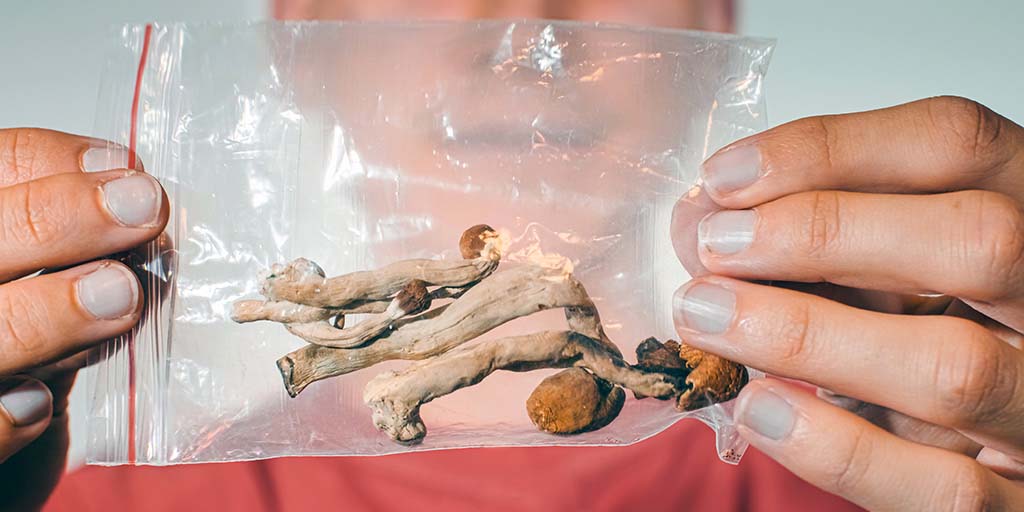
If you've tripped on magic mushrooms more than once, you know that one experience is very different from another. This can be due to the potency of the magic mushrooms and even which parts of the magic mushrooms you are taking. In this article, we look at three scientific studies. An "aha" moment for the seasoned psychonaut, and important information for anyone taking magic mushrooms for the first time.
Are some parts of magic mushrooms stronger than others? For years, the wildest stories have been circulating on Internet forums. Fortunately, research has also been done on the strength of magic mushrooms. In this article we look at the results of three different studies. Below we always mention cubensis mushrooms. All mushroom grow kits in our collection are variations of this species of mushrooms, with the exception of the Hawaiians we mention below.
Are caps or stems of magic mushrooms stronger?
On average, caps of Psilocybe cubensis and Copelandia mushrooms appear to contain more psilocybin. This is according to data from a study from Japan [2].
|
Psilocybe cubensis |
Caps |
Stems |
|
Psilocybin |
0.44–1.35% |
0.05–1.27% |
|
Psilocin* |
0.17–0.78% |
0.09–0.30% |
|
Panaeolus copelandia (Hawaiians) |
Caps |
Stems |
|
Psilocybin |
0.02–0.22% |
0.01–0.39% |
|
Psilocin* |
0.64–0.74% |
0.31–0.78% |
*Psilocybin is degraded by our bodies to psilocin. This is the substance that actually gets us high.
We sell Panaeolus copelandia as the Hawaiian magic mushroom grow kit. In the numbers of this study, you may see that the cubensis mushrooms are stronger. But this depends on the individual mushroom. Because the Hawaiians are so small, a harvest like this contains more mushrooms and therefore more psychedelic substances.
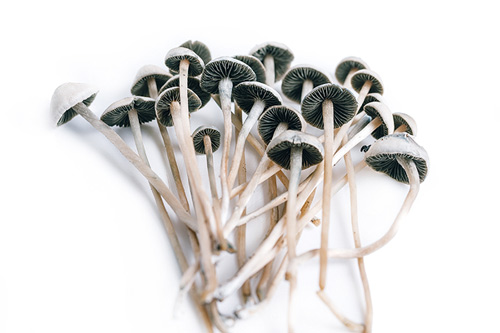
Panaeolus copelandia paddo’s
As you can see, the caps of Psilocybe cubensis contain about twice as much psilocin. Also, the lower limit of psilocybin in the tested mushrooms is a lot higher. Therefore, you can say that on average, the caps may be stronger. May be, because it turns out that one magic mushroom is not like the other.
One magic mushroom is not the same as another
If you take 2 mushrooms from the exact same mushroom grow kit, under the exact same growing conditions, the percentage of psychedelic components could be different. Even if they are next to each other in the same tray. For example, mushroom A could be twice as strong as mushroom B. That has nothing to do with the genetics, because they are identical. It is mainly due to the age of the mushroom. A mushroom harvested too early or too late contains less psilocybin and psilocin than one harvested exactly on time. Harvested too early means they could have grown and therefore contained more psilocybin by volume. If you harvest them too late, the cap curls upward and the spores fall out, then wilt. As a result, they lose potency. Take a look at the photo below for the right time to harvest.
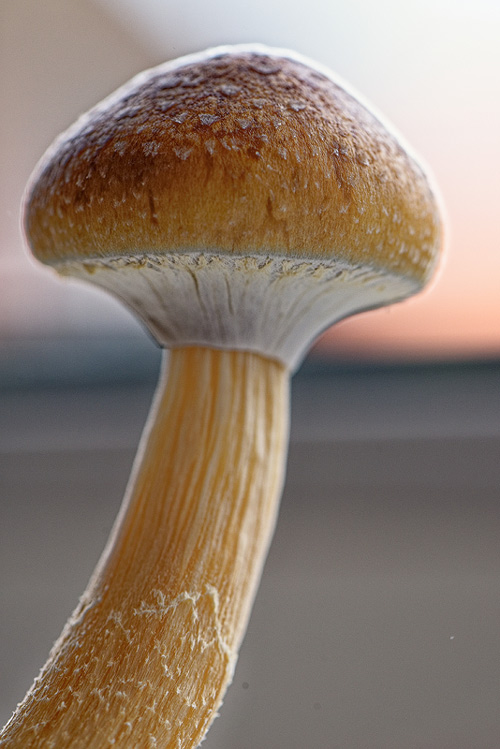
This cubensis mushroom was harvested right on time.
In practice, harvesting mushrooms at the perfect time is challenging. Because you have to harvest the entire growing kit at once. Make sure to do so at the time when most magic mushrooms are about to release their membrane that connects the cap to the stem.
Later flushes are stronger than earlier flushes
In an analysis of a widely cited study [1] on the strength of cubensis mushrooms, it is found that mushrooms from a later flush contain more psilocin than earlier flushes. And yet the amount of psilocybin does not change as more flushes are harvested.
So it really is worth restarting the same grow kit more often after each harvest. Not only because you can harvest more magic mushrooms in total, but also because, according to this study, they probably get stronger. We say probably, because the growing conditions influence your harvest. If they are identical to the first flush, then your mushrooms will indeed be stronger. You can grow about 400 grams of cubensis mushrooms in 4 flushes with a 1200 CC grow kit.
Huge variation between cultivations of the same strain
If we compare two cultivations [3], we see with almost every species that the total amount of active psychedelic substances can vary considerably. Again, take Psilocybe cubensis from this study. The amount of psilocin was between 0.2 and 5 mg per gram of magic mushrooms. That's a factor of 25. With psilocybin, the difference was less astronomical, but just as large. A factor of 5 is quite possible. And we see this kind of difference in all the mushrooms (226) that have been tested. This also shows that the strongest specimens of a rather tame species can contain more psilocybin than the weakest specimen of the strongest magic mushrooms such as azurescens, cyanescens and semilanceata.
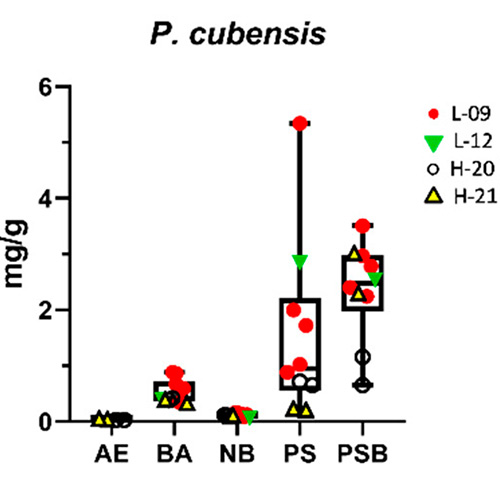
Cubensis magic mushrooms compared [3].
Above you can see the amount of psychedelic substances in cubensis mushrooms. Different colors mean different harvests/samples. AE: aeruginascine, BA: baeocystine, NB: norbaeocystine, PS: psilocin, PSB: psilocybin.
Practical conclusion
As you can see, some magic mushrooms can be much stronger than others. So if you use our magic mushroom and magic truffle dosage calculator, you should consider that. It is likely that this also applies to magic truffles. After all, they are natural products.
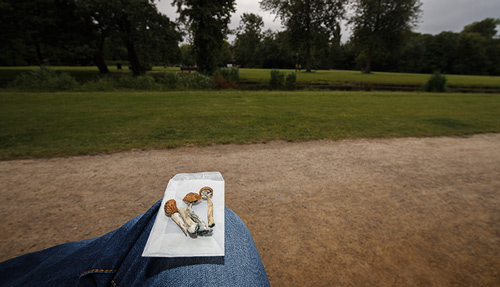
If you have a nice harvest of magic mushrooms, preferably from multiple flushes, we recommend that you mix them well. Take small and large mushrooms from multiple flushes if you want to go on a trip to make sure you get an average amount of psychedelics from that harvest.
You can also crush the entire harvest and then mix it. Then you will have a homogeneous (well spread out) mixture from that harvest. If the first trip is disappointing because you expected more, you can say with much more certainty that it was due to the dose and not to the selection of magic mushrooms or magic truffles. You can then simply increase the dose and expect the next trip to be more intense. Truffles and magic mushrooms can be stored longer with these tips.
Sources:
[1] Bigwood, J. Beug, M.W. “Variation of psilocybin and psilocin levels with repeated flushes (harvests) of mature sporocarps of Psilocybe cubensis (earle) singer” Journal of Ethnopharmacology, Volume 5, Issue 3, May 1982, Pages 287-291. Nov. 2002. https://www.sciencedirect.com/science/article/abs/pii/0378874182900149.
[2] Tsujikawa, K. et al. “Morphological and chemical analysis of magic mushrooms in Japan” Forensic Science International Volume 138, Issues 1–3, 17 December 2003, Pages 85-90. Oct. 2003. https://www.sciencedirect.com/science/article/abs/pii/S0379073803003785.
[3] Gotvaldová, K. et al. “Extensive Collection of Psychotropic Mushrooms with Determination of Their Tryptamine Alkaloids” International Journal of Molecular Sciences Nov. 2022. https://www.mdpi.com/1422-0067/23/22/14068